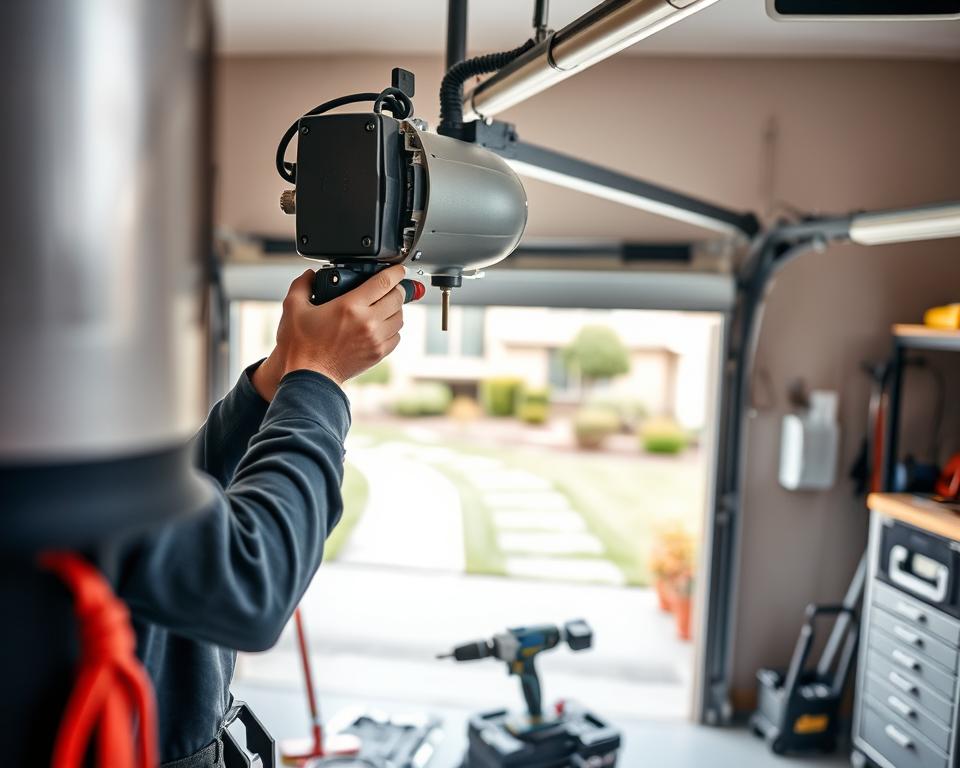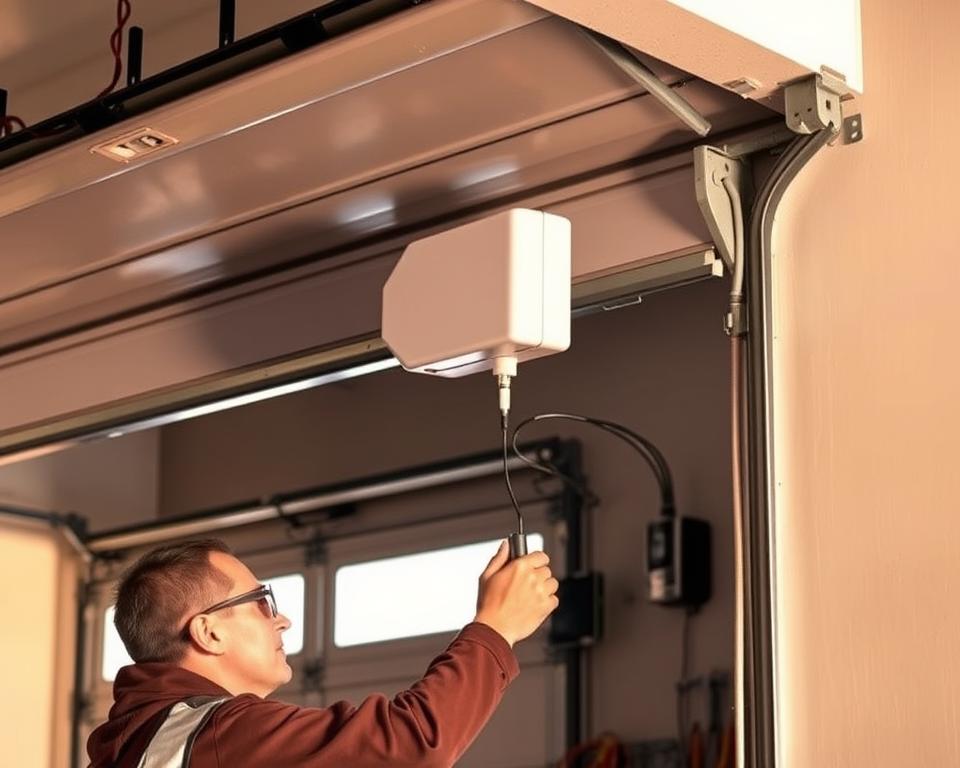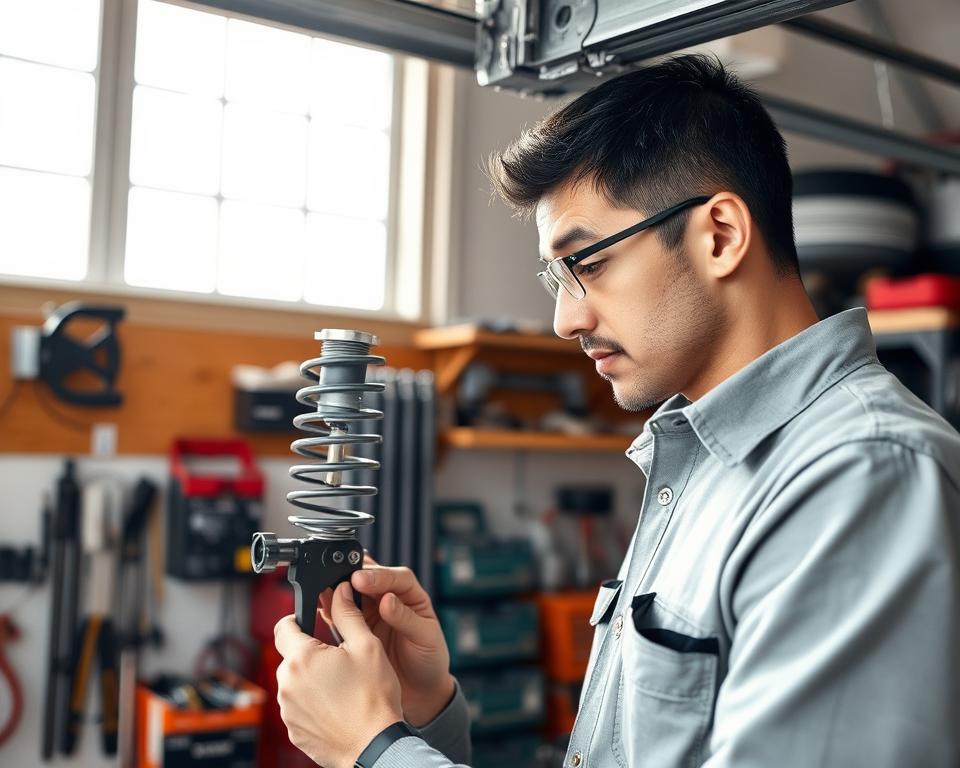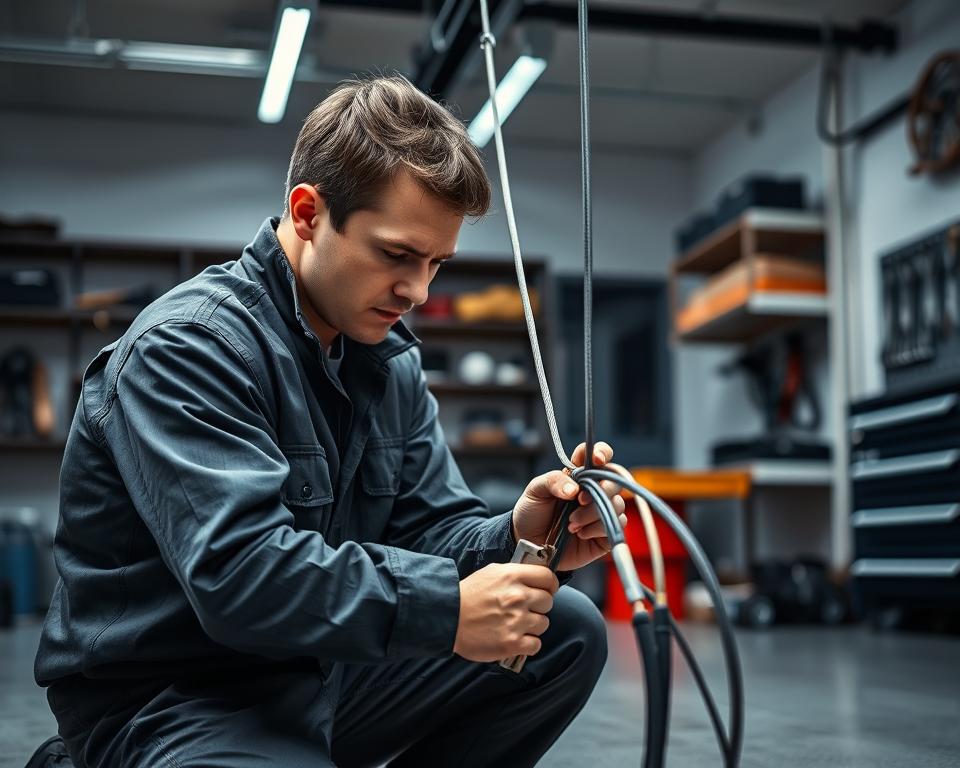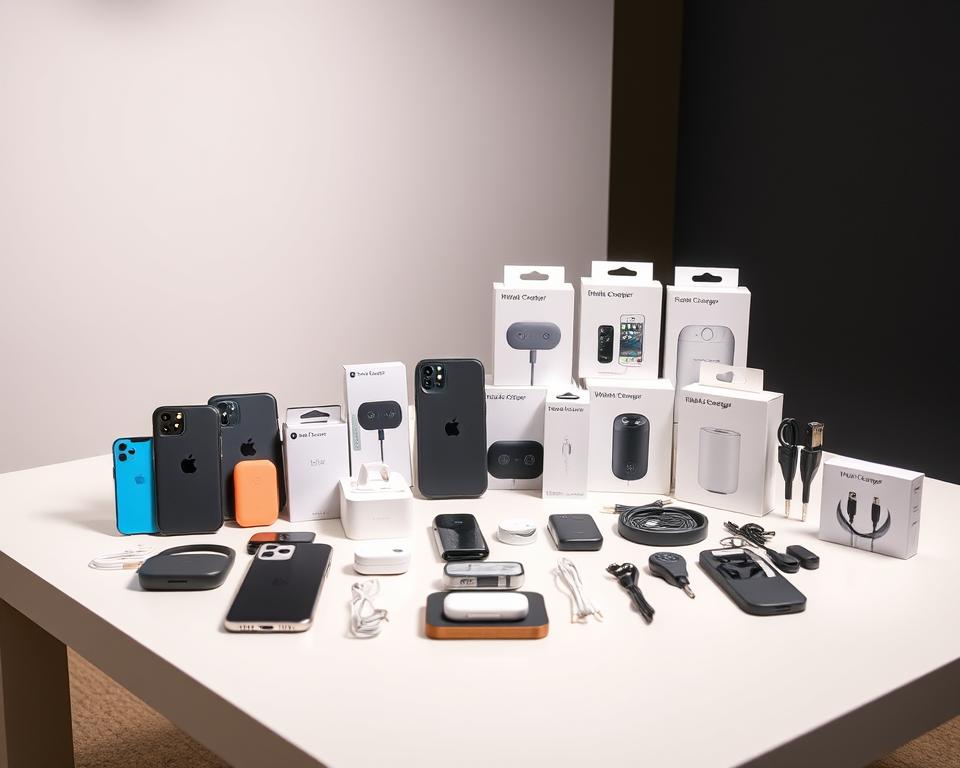Garage Door Sensor Implementation in Rossmoor – Specialist Help
Have you ever thought about how critical your garage door sensors are to your residence’s protection? These tiny gadgets are often disregarded but fulfill a huge role in preventing incidents and ensuring your garage door performs flawlessly. If you’re seeking garage door sensor installation in Rossmoor, it’s vital to acquire qualified help. Coastline Garage Doors supplies this assistance with knowledgeable technicians who can set up and align safety sensors accurately.
This write-up will explore the critical components of garage door sensor installation, maintenance, and the typical difficulties you might encounter. Understanding these can assist you form well-founded selections and make certain your garage door mechanism is in excellent shape – new garage door installation near me.
Understanding Garage Door Safety Sensors
Garage door safety sensors are crucial for the safety and performance of your garage door setup. Identified as photoelectric sensors, they stop incidents by detecting barriers. It’s essential for property owners to comprehend how these sensors function to fulfill safety regulations and safeguard their families.
What Are Garage Door Safety Sensors?
These sensors project an infrared light to detect things in the door’s course. If the light is broken, the sensors halt the door from lowering. Situated about 6 inches off the floor, they detect blockages like kids or pets.
Importance of Safety Sensors for Garage Doors
Safety sensors are critical for preventing accidents and damage. They are compulsory under safety regulations, indicating their significance. Routine examinations guarantee your garage door operates securely and meets regulations.
Advantages of Specialist Garage Door Sensor Setup
Deciding on specialized garage door sensor installation brings many advantages. Knowledgeable professionals ensure the installation is done with maximum accuracy. Their knowledge guarantees that sensors are set up appropriately, improving both operation and security.
Knowledge and Background
Choosing experts for installation offers confidence. Accredited specialists are proficient in the most recent garage door technology and installation approaches. Their abilities result in efficient installations that meet all safety guidelines.

Guaranteeing Security and Adherence
Adequate sensor installation is essential for protection and adherence. Technicians adhere to strict safety guidelines, reducing risks from inadequate setups. This focus on precision not only safeguards users from injuries but also fulfills lawful safety regulations. It’s critical to choose experienced installers for your garage door sensors.
Indicators Your Garage Door Sensors Demand Attention
Having an eye on your garage door sensors is important for their proper operation. House owners require recognize the signs of sensor problems, which can create significant safety dangers. Recognizing these initial warnings can aid stop the risks of problematic garage door mechanisms.
Common Manifestations of Faulty Sensors
Be aware of a few essential indicators that could suggest sensor malfunctions:
- The garage door refuses to close fully or pauses before reaching the floor.
- Random reversals happen when the door is on its downward path.
- The door doesn’t respond to the controller or wall switch.
- Constant blinking lights on the sensor indicate probable issues.
- Any peculiar noises or unpredictable performance during functioning.
Possible Safety Risks with Defective Sensors
Disregarding sensor problem indicators can create major safety hazards:
- Injuries to people or pets if the door shuts unexpectedly.
- Destruction to vehicles or other belongings due to a faulty door.
- Higher chance of mishaps, specifically in high-traffic areas.
- Psychological distress due to the worry of unreliable door function.
Swiftly tackling garage door sensor troubles guarantees a safer space for all.
Garage Door Sensor Implementation in Rossmoor
When you’re researching garage door sensor installation in Rossmoor, it’s essential to choose the proper experts. Many property owners don’t realize the value of selecting installers who have expertise. They ought to have a good standing and be up-to-date on the newest sensor innovations.
Finding the Proper Professionals in Rossmoor
Commence by researching diverse companies for garage door sensor installation in Rossmoor. Consult friends or family for their thoughts. Web ratings are also essential in judging provider reliability. Coastline Garage Doors, for example, provides excellent costs and professional installation, making them a prime pick.
Cost and Period Considerations for Implementation
Installation prices for garage door sensors are influenced by the task’s difficulty. Anticipate an initial assessment to determine your garage’s specific requirements. Elementary setups might be less expensive, but highly advanced systems may be priced higher. Duration is also a element; installations generally take a few hours, but this can vary.
Choosing competent assistance guarantees a long-lasting remedy that increases safety and operation. It’s an commitment worth making for the long haul.
Sequential Tutorial for Garage Door Sensor Setup
Installing garage door safety sensors calls for accuracy and the proper tools. This guide encompasses the necessary equipment and preparatory steps for a smooth installation procedure.
Equipment and Resources Required
- Screwdrivers (both flathead and Phillips)
- Wire strippers
- Spirit level
- Drill with drill bits
- Tape measure
- Electrical tape
- Safety goggles and hand protection
Planning for Implementation Operation
Proper preparation is essential before setting up garage door safety sensors. Start with these steps:
- Ensure the garage door electricity is turned off to avoid accidents.
- Gather all needed equipment to avoid disruptions.
- Study the producer’s instructions for your sensor type.
- Check the area for cleanliness and lack of obstructions.
With the proper supplies and readiness, you’re set for a secure and effective installation.
Garage Door Sensor Positioning Techniques
Confirming your garage door works safely and effectively revolves around accurate sensor positioning. Proper methods assist the sensors align directly, avoiding failures. Monitor blinking LED indicators on the sensors, a symptom of poor alignment.
How to Appropriately Adjust Garage Door Sensors
To position your garage door sensors ideally, follow these procedures:
- Initiate by detaching the garage door opener for security.
- Check the sensors for any hindrances that may affect positioning.
- Modify the sensors so they face each other exactly. You might require to unfasten screws and move them.
- Fix the sensors in their new locations by securing the screws.
Verifying Sensor Performance After-Adjustment
After aligning, it’s crucial to test the sensors’ operation. Here’s how to accomplish this:
- Put an item, like a container, in the sensor ray’s way.
- Reattach the garage door opener.
- Try to activate the garage door. It ought to reverse or stop when it detects the object, demonstrating the sensors function right.
Garage Door Sensor Preservation Recommendations
Upkeeping garage door sensors is crucial for security and functionality. Periodic care eliminates filth and residue that can obstruct performance. It’s essential for homeowners to examine these units routinely to detect troubles quickly.
Scheduled Care and Check
Maintaining sensors regularly forestalls problems due to collection. Debris, leaves, and debris can block sensors, creating failures. Checks every few periods are advised to look for harm or abnormalities. Keeping sensors clear and in proper shape guarantees steady function.
Signals of Damage and When to Swap Sensors
Homeowners need to watch for signs that sensors may need replacement. Watch for issues during functioning, like the door not closing or communication error signals. If these problems remain after maintenance, it’s time to think about replacement. Periodic maintenance and knowledge of issues can prolong sensor longevity.
Cost of Garage Door Sensor Setup and Substitution
The expense of implementing garage door sensors can change significantly. Numerous aspects impact this cost. Grasping these can assist homeowners plan their finances for setup or replacement.
Recognizing the Cost Variables
Several components affect the price of installation. The style of sensors picked, the intricacy of the installation, and professional charges are essential. Top-tier sensors, for instance, might boost prices but provide enhanced safety and resilience.
Settings with problematic approach, unique layouts, or present impairment can also raise labor fees. It’s prudent for house owners to secure estimates from multiple contractors to identify the best rates.
Prospective Extra Charges for Repairs
At times, sensors may malfunction due to fundamental concerns, creating unexpected fix fees. If a replacement is necessary, additional corrections could be needed, raising complete expenses. It’s crucial to consider these additional charges when arranging for implementation. This method, house owners can be prepared for any supplementary charges related to sensor exchange.
Selecting the Right Garage Door Sensors
When it comes to garage door safety, picking the proper kinds is crucial. Different models of garage door sensors address different necessities and settings. It’s important to understand these selections to make knowledgeable selections. This makes certain you discover the best sensors for your garage configuration.
Multiple Varieties of Garage Door Sensors
Garage door sensors mainly come in two kinds: IR photo sensors and beam sensors. Photoelectric sensors apply ray rays to detect hindrances. Laser sensors, on the other hand, deliver greater precision by monitoring activity at extended ranges. It’s essential to choose the appropriate variety based on your garage size and application patterns.
Qualities to Contemplate When Opting for Sensors
When picking garage door sensors, numerous key attributes ought to be considered. Automatic backing is essential for protection, preventing the door from shutting on things or persons. Durability versus elements is also critical, guaranteeing the sensors endure extensively. Coastline Garage Doors can assist property owners locate the right sensors for their safety requirements.
Improving Your Garage Door Opener with Enhancements
Upgrading your garage door opener can significantly boost its performance and functioning. Current tech in openers has brought attributes that were before unavailable. These enhancements not only create daily activities easier but also boost your property’s security.
Advanced Attributes and Technology in Garage Door Openers
Present-day garage door opener improvements feature cutting-edge technology. This tech alters how you engage with your garage mechanism. Some key attributes comprise:
- Mobile device connection for distant access and management
- Sound decrease technology for more silent functioning
- Battery reserve mechanisms providing performance during power outages
- Enhanced safety systems to avert accidents
The Advantages of Modernizing Your Mechanism
Putting money in garage door opener improvements delivers many gains. Homeowners can benefit from:
- Increased comfort through remote operation
- Improved security capabilities lowering the likelihood of burglaries
- Improved power usage creating diminished energy expenses
- Enhanced safety for family members and pets
Coastline Garage Doors provides recommendations to help house owners opt for the optimal modifications. This ensures your garage setup is working and safe.
Immediate Help for Garage Door Sensors
Garage door sensors are critical for household safety. Recognizing when to summon for crisis support can avert mishaps and save hours. Breakdowns, like poor alignment or unresponsiveness, necessitate instant action. It’s critical to grasp when to seek help to sustain your garage door’s performance and safety.
When to Contact for Critical Aid
Garage door sensors can fail without alert. If the door cannot close or sensors behave unusually, react fast. Other warning indicators encompass:
- Odd noises during use
- The garage door moving backwards unexpectedly
- Incapacity of the sensors to recognize objects
- Noticeable impairment to the sensor parts
These signs necessitate specialist assistance to guarantee protection and security are restored.
Discovering Reputable Immediate Service Contractors in Rossmoor
Finding reliable emergency help in Rossmoor is vital in crises. Start by searching for respected businesses that deliver emergency garage door help. Examine for feedback, recommendations, and certifications. Having reputable providers’ phone numbers on hand assures swift action when urgent situations arise.
Conclusion
Adequate setup of garage door sensors is vital for safety and performance in your garage. These sensors are key in averting incidents and offering house owners peace of mind. An successful sensor system not only enhances protection but also protects belongings and family members.
Opting for specialists like Coastline Garage Doors for installation provides several advantages. Their knowledge guarantees sensors are implemented accurately, decreasing failure dangers. Periodic care and inspections further enhance sensor function. This highlights the significance of specialist installation in setting up a trustworthy mechanism.
House owners must emphasize the installation and upkeep of garage door sensors. This anticipatory action guarantees security, operation, and peace of mind at your property. Recognizing the value and expertise required creates a more protected atmosphere for all.

